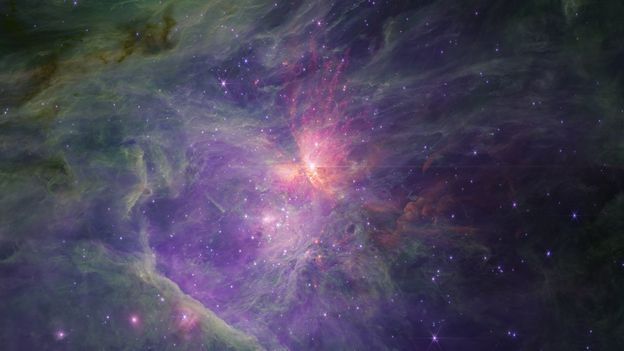The Mysterious Pairs Of Planets We Still Can't Explain
 Read more: Found here
Read more: Found hereWe thought we broadly understood how planets and stars form. But the discovery of dozens of pairs of young planets in a nearby nebula threatens to turn that on its head.
They are worlds that simply defy explanation. Drifting through the Orion Nebula – an enormous cloud of dust and gas relatively close by in our galaxy – are what appears to be dozens of Jupiter-sized planets that don't conform to the conventional understanding of how planetary systems form. Rather than being bound to a star like the Earth is in our own Solar System, these planets are free-floating through space in pairs . Astronomers who spotted them with the help of the James Webb Space Telescope (JWST) could only scratch their heads in awe at the discovery.
⁘These things shouldn't exist,⁘ says Simon Portegies Zwart, an astrophysicist at Leiden University in the Netherlands. ⁘They go against everything we have learned about star and planet formation.⁘
In the subsequent months, efforts have been made to try and explain what's going on. These planets, called Jupiter Mass Binary Objects, or Jumbos, still cannot be fully explained. But we are getting closer to an answer – with crucial observations on the horizon that may solve the mystery once and for all.
Jumbos were discovered by Mark McCaughrean, a former ESA astronomer in the Netherlands who now works at the at the Max Planck Institute for Astronomy in Germany, and Samuel Pearson, an astronomer at ESA in the Netherlands. They had been using data from JWST to study the Orion Nebula, around 1,500 light years away from Earth. They were particularly interested in a 10-light-year-wide region of young star formation called the Trapezium Cluster that is just one million years old.
JWST – which contains the biggest mirror to ever be launched into space – has immense infrared capabilities, allowing it to peer through the cloud and dust of the cluster like no telescope before it. Those observations revealed a myriad of interesting young stars and star-forming regions, where immense swirling masses of gas were condensing under gravity to form stars. But they also discovered something wholly surprising – amidst the cosmic dust were floating Jupiter-sized planets that appeared to be drifting in pairs . ⁘The finding was completely unexpected,⁘ says McCaughrean.
Comments
Post a Comment